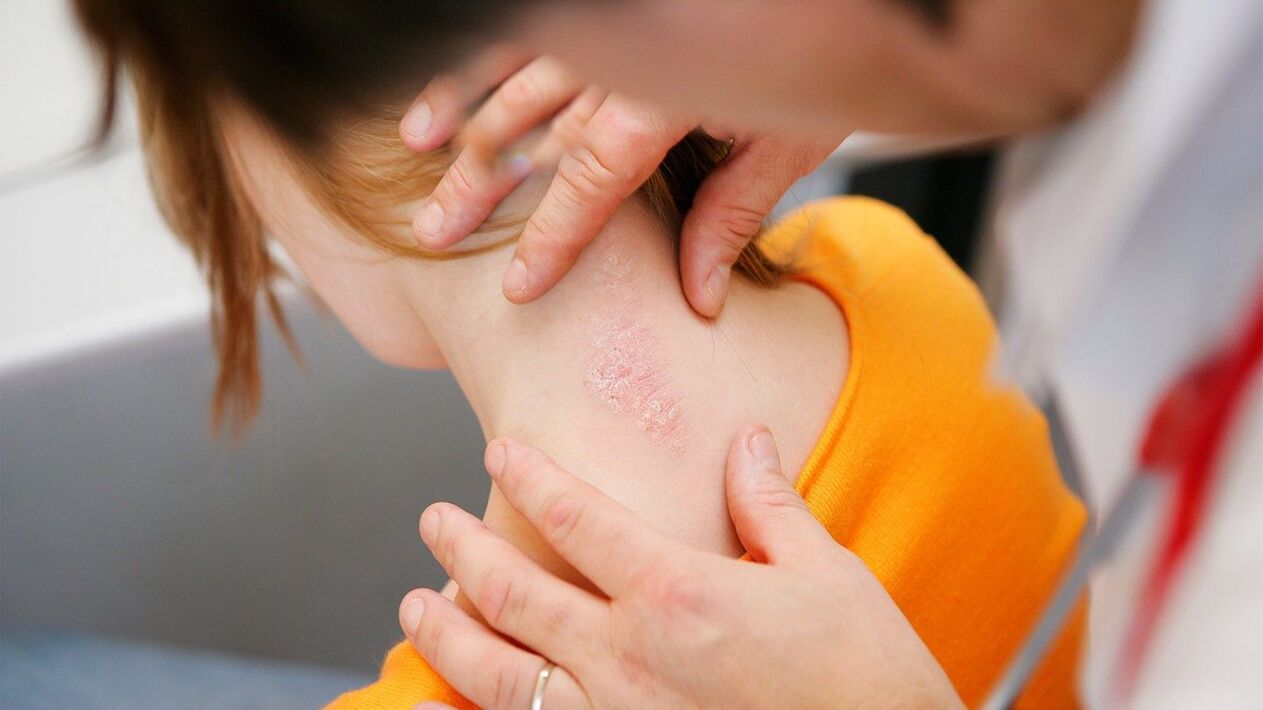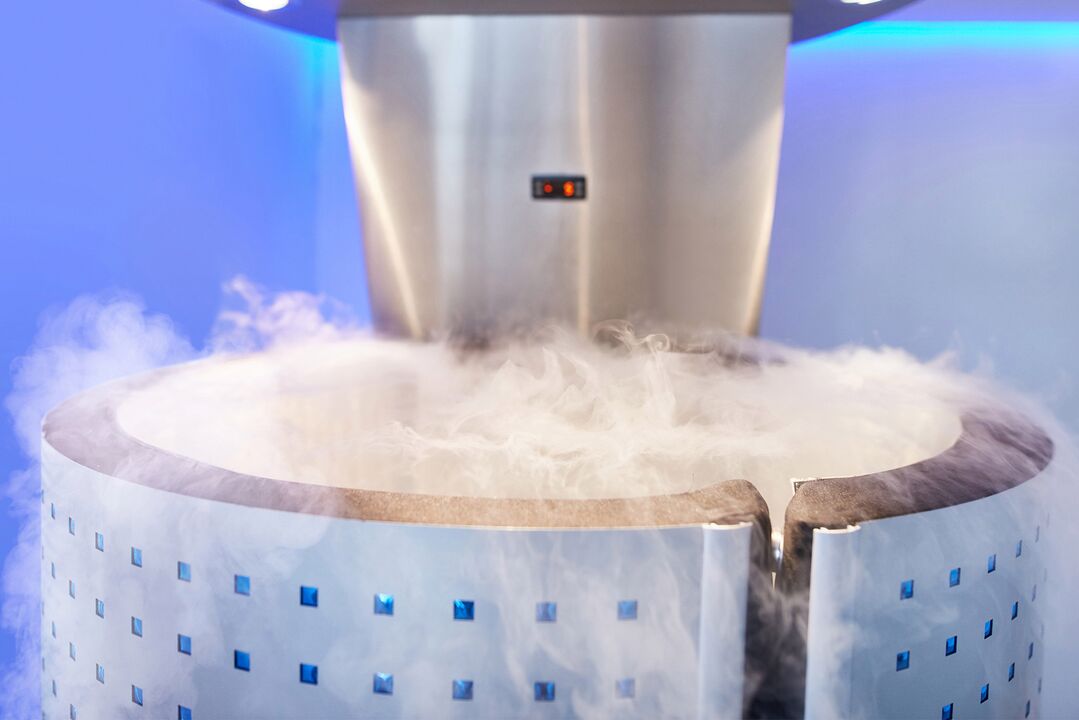Psoriasis is one of the most common skin diseases.According to the International Federation of Psoriasis Associations (IFPA), psoriasis is detected in 125 million people worldwide.
In most cases, this disease occurs in people of working age: 15 to 35 years.Men and women are equally likely to develop the disease.Despite the widespread prevalence of this disease, not all patients understand what psoriasis is, why it occurs, and how to treat it.Let's deal with them all in order.
Let’s briefly talk about the main things

Psoriasis is an autoimmune, chronic inflammatory disease characterized by the formation of specific "patch" on the skin.The autoimmune mechanism is related to the production of protective antibodies against the body's own cells, which the body mistakenly sees as foreign.Scientists have long identified a link between the disease and immune system activation, but exactly what causes the failure of self-cell recognition has not been reliably elucidated.
A genetic predisposition to psoriasis has been demonstrated: If both parents have the disease, there is a 50% chance that the child will also have psoriasis.Even some of the genes responsible for its development have been identified.In addition, the influence of hormonal imbalances, nervousness, metabolic disorders, and viral infections on the manifestation of psoriatic lesions in the body has also been established.
In many cases, psoriasis is combined with diseases of other organs and systems:
- type 2 diabetes;
- metabolic syndrome;
- Pathology of the liver and biliary tract;
- coronary heart disease;
- Arterial hypertension.
Psoriasis classification and symptoms
The main clinical manifestations of the disease depend on its form and course.

- Psoriasis vulgaris: A characteristic rash on the skin that looks like raised, red areas (so-called papules) with superficial peeling.The second name for psoriasis is scaly lichen because of the white scales it develops.If you scratch such an area, you can see the "stear smear phenomenon" - an increase in the number of flakes, similar to a drop of frozen stearin.When the scales are completely removed, a shiny, wet terminal board is revealed, and upon further scratching, a single small drop of blood will appear on it.Such papules are usually located on the scalp and joint extensor surfaces.
- Exudative psoriasis: Inflamed areas secrete an inflammatory fluid that moistens the scales, turning them into scabs that are difficult to remove.
- Seborrheic psoriasis is common in areas of skin with large numbers of sebaceous glands: the nasolabial folds, scalp, the area between the shoulder blades, and the chest.In this variant, severely itchy patches with yellow scales develop.
- Teardrop-shaped lesions are more common in children and appear as multiple small red papules that may flake off slightly.
- Pustular psoriasis is a form of superficial pustules, usually found on the palms and soles of the feet.
- Systemic forms: psoriatic erythroderma, which presents as widespread confluent lesions covering 90% of the body surface, and Tsumbusch's psoriasis, which presents with widespread foci of purulence.With the common form of the disease, general health is also affected: weakness, malaise, increased body temperature occur.
- Psoriatic arthritis manifests as joint skin redness, swelling, pain, limited joint movement, joint deformation, and stiffness after sleeping.
- Psoriatic nail dystrophy is a disorder of the nails.Characterized by "grease symptoms" (yellow-brown spots under the nail plate) and "thimble symptoms" (point-like lesions on the nails).
How is psoriasis treated?

Treatments for psoriasis are constantly being refined and supplemented, but no single drug can defeat the disease forever.Therefore, the main treatment strategies for psoriasis are:
- Reduce the frequency of exacerbations;
- Relieve disease symptoms;
- Improve quality of life;
- Reduce the likelihood of complications and concomitant diseases.
Treatment is usually done on an outpatient basis, but some cases may require hospitalization:
- Severe systemic psoriasis variants that worsen the patient's systemic condition (especially erythrodermic and pustular psoriasis);
- There are complications and accompanying pathologies that aggravate the patient's condition;
- Medications requiring regular monitoring of clinical and laboratory parameters are required.
When treating psoriasis, both topical and systemic medications are used.
topical treatment
This type of treatment is represented by ointments, gels, creams applied directly to the affected area.
topical corticosteroids
These are hormonal medications that have anti-inflammatory effects on the skin.In addition, hormones can reduce itching, suppress the immune response, reduce the spread of inflammatory processes and prevent the fusion of lesions.Many studies have proven that these drugs are very effective.They can be used alone (for local forms) or in combination with other means.
This group includes flucinar, hydrocortisone, elocom, prednisolone, advantan, acriderm.Topical corticosteroids are available in creams, ointments, and lotions.
The disadvantage of this class of drugs is the risk of systemic (general) effects with long-term use and exposure to large areas.Here are the rules for using these medications:
- Use only in the shortest possible courses.
- When infection occurs, glucocorticoids combined with antibiotics or antifungal drugs should be given priority.
- Children should not have hormones applied to their face, neck, or skin folds.
- It is best to start treating children with weak or moderately active drugs (prednisolone, hydrocortisone).
Typically, hormonal medications are used to treat psoriatic papules 1-2 times a day for up to 1 month.Long-term use may cause adverse reactions:
- burning, redness, and itching;
- the appearance of acne;
- local infection;
- thinning, dry skin;
- Reduce pigmentation;
- Skin striae.
Complications most commonly occur on the skin of the face and groin area.
salicylic acid
Used in conjunction with topical corticosteroids, significant peeling can be achieved.Preparations containing salicylates (diprosalic, acriderm SK, elokom S) effectively exfoliate the stratum corneum and help restore the skin.
vitamin therapy

Vitamin D is an effective treatment for localized psoriasis because it reduces inflammation and excessive division of skin cells.Apply a cream or ointment containing vitamin D3 (calcipotriol, daivonex, calcipotriene) to the plaques 1-2 times a day for about 2 months.They are not recommended for treating large areas of skin.Can be used in combination with glucocorticoids.
Adverse effects of topical vitamin D3 are rare and include skin burning, redness, and itching.In this case, I either interrupt the course of treatment or reduce the frequency of application of the ointment.If you take too much, you may experience systemic symptoms of too much vitamin D: reduced bone density and kidney stone formation.
Medications from this group are not prescribed before starting ultraviolet therapy.
Medications based on salicylic acid and vitamin D analogues cannot be administered externally at the same time - this will lead to the inactivation of the latter and significantly reduce the therapeutic effect.
zinc pyrithione
Such preparations (skin-cap, zinocap) are produced in the form of creams, aerosols and shampoos.They are used not only to treat psoriasis but also to prevent its recurrence.Mechanism of action is antibacterial, antifungal activity and slowing of cell division.Repeated use of medications may cause skin irritation, dryness, and irritation.Therefore, the treatment course should not exceed 1.5 months.
systemic treatment
This treatment option involves the use of medications in the form of tablets or injections; they affect not only the outer skin tissue but also the internal organs.Systemic treatment is used for moderate to severe psoriasis.
Methotrexate
A cytostatic drug that prevents cells from dividing.It is used to treat psoriatic arthritis, erythroderma, pustular and vulgaris psoriasis if it has not responded to other types of treatment.
The dose of methotrexate is chosen individually and taken once or several times a week.After remission, continue taking the medication at the lowest effective dose.The drug often causes side effects, so this treatment requires ongoing medical supervision.Possible adverse reactions:
- Decreased numbers of all blood cells;
- Appetite suppression, nausea, vomiting;
- Formation of ulcers and erosions in any part of the digestive system;
- Damage to the liver and pancreas;
- Headache, drowsiness, convulsions;
- visual impairment;
- Renal insufficiency;
- Inhibits the process of germ cell formation;
- Decreased libido;
- joint and muscle pain;
- non-infectious pneumonia;
- allergic reaction.
The drug should be discontinued if severe shortness of breath, cough, severe infectious disease, anemia, or significant elevations in blood markers of renal or liver failure occur.
cyclosporine
Drugs that suppress immune system function.This treatment is reasonable given the autoimmune nature of psoriasis, however, a general decrease in immunity often leads to infectious and neoplastic complications.Therefore, this drug is rarely used as maintenance treatment and only when the condition worsens.Start taking the lowest dose of cyclosporine and then increase the dose until you get the desired results.
Cyclosporine adverse reactions:
- Impaired kidney function, swelling, increased blood pressure;
- Toxic effects on liver and pancreas, nausea, loose stools;
- Development of malignant tumors and lymphomas;
- Decreased number of blood cells;
- Muscle pain, cramps;
- Headache;
- allergy.
Use of cyclosporine requires ongoing medical supervision, periodic blood tests, and other necessary examinations.
Retinoids
Retinoids (Acitretin, Isotretinoin) are vitamin A derivatives that have a normalizing effect on the division and keratinization process of skin cells.The average course of treatment with such drugs is 2 months, and the dosage is chosen individually.There is also a certain risk of adverse reactions when using retinoids:
- dryness of mucous membranes;
- peeling skin;
- Fungal vulvovaginitis;
- Hair loss, thinning and brittle nails;
- muscle and joint pain;
- Liver inflammation, jaundice;
- Nausea, bowel disturbances.
Despite possible side effects, these medications are safer than previous options, especially considering that all of these complications are reversible and disappear after a period of discontinuation of the medication.Retinoids should not be taken with methotrexate as this increases the risk of structural damage to the liver.
monoclonal antibodies
Monoclonal antibodies (infliximab, adalimumab, efalizumab) are genetically engineered biological products and are antibodies.They have the ability to suppress autoimmune processes and reduce inflammation.These drugs should be administered subcutaneously or intravenously no more than once per week.Their negative effects on the body are mainly related to suppressing the immune response:
- Add any localized infections;
- benign and malignant tumors;
- Allergy manifestations;
- Headache, dizziness;
- frustrated;
- Nausea, vomiting;
- Joint and muscle pain.
These drugs may be used in combination with methotrexate.
systemic glucocorticoids
Systemic corticosteroids (prednisolone, dexamethasone) are specifically indicated for the treatment of psoriatic arthritis and acute systemic disease and are available in injectable and dropper forms.But even in these cases, the course of hormone therapy should not be too long because of the risk of exacerbation and the formation of pustules.
additional medication
This group includes drugs necessary for the correction of concomitant conditions that aggravate the course of psoriasis, as well as for the treatment of joint forms of the disease.
- Due to the high frequency of exacerbations of psoriasis against the background of an unstable neurological state, psychotropic drugs are used.In particular, antidepressants (amitriptyline, fluoxetine, venlafaxine) and anxiolytics - sedatives (diazepam, phenazepam, buspirone) are prescribed.Antidepressants are often used to treat chronic depression and stress and need to be taken over a long period of time.Sedatives can be taken as often as needed depending on the external situation.This group of drugs suppresses anxiety, irritability, sensitivity to stressors, and normalizes sleep.However, it should be remembered that drugs also have contraindications for their use and adverse effects, which does not always allow them to be taken simultaneously with the main treatment of psoriasis.
- NSAIDs are used in the comprehensive treatment of psoriatic arthritis to reduce inflammation, swelling, and pain.These products are manufactured in the form of tablets, injections, gels, and topical ointments.Due to negative effects on the gastrointestinal tract (ulceration), the course of treatment with these drugs should be as short as possible.
- Occasionally use antihistamines to reduce itchy skin.First-generation (Tavegil, Suprastin), second-generation (Fenistil, Claritin), or third-generation (Zyrtec, Erius) prescription drugs.These drugs are about equally effective, however, third-generation drugs do not have the common side effects of antihistamines, such as increased drowsiness.
Physical therapy for psoriasis
Ultraviolet irradiation (UVR) is the exposure of radiation with a wavelength of 311-313 nm to the entire body or various parts of the body.This technique is not suitable for severe systemic psoriasis and its summer type, as it will only aggravate the condition.
Selective phototherapy (PUVA therapy) is a type of ultraviolet radiation, but in this case the wavelength used is 310-340 nm.Regular use of this physical therapy can give you long-term relief.A session can last up to 2 hours, with a recommended total of 35 sessions.You may experience dry skin after surgery, requiring the use of moisturizer.There are many contraindications to PUVA therapy, such as renal failure, diabetes, and skin tumors.
X-ray therapy involves treating the skin with soft X-rays, which can help effectively combat itching and the formation of new plaques.
Ultrasound treatment exposes the skin to ultrasound, which has anti-inflammatory, antibacterial, analgesic, and anti-itch effects.One procedure lasted 15 minutes, caused no discomfort, and was well tolerated.A total of 14 sessions is recommended.
Electrosleep indirectly affects the course of psoriasis and improves the patient's mental state.This manipulation produces a sedative effect, improves sleep, increases resistance to stress, and reduces overexcitability of the nervous system.A session can last up to 1 hour and a minimum of 10 procedures is recommended.
psychotherapy
Many studies have demonstrated the role of unstable mental status in the development of psoriasis.Various stresses, anxieties, fears and experiences often cause psoriasis to develop or worsen in people who are genetically predisposed.Therefore, psychotherapy is important to prevent exacerbations and reduce the frequency of relapses.
During the treatment, the specialist talks to the patient, asks guiding questions and tries to find out the cause of the psychological problem.Further treatment is aimed at stabilizing the patient's emotional state.A psychotherapist can teach you to cope with work and family stress, find outlets for negative energy, and develop a positive attitude about yourself and the world around you.
Nutritional treatments for psoriasis
People with psoriasis are advised to:
- Drink plenty of fluids: 7-10 glasses of still water or freshly squeezed juice per day.
- Eat more fruits and vegetables: grapes, nectarines, cherries, pineapple; beets, carrots, cucumbers, cabbage, garlic, onions, dill, fennel.
- Do not forget the protein component of your diet: eggs, lean meat, nuts, beans.
- Only natural sweets: dried apricots, dates, raisins.
- Do not overdo it with citrus fruits, tomatoes, red bell peppers, strawberries, honey.
- Avoid chocolate and whole milk, which are high in fat.
- Avoid alcohol, caffeine, spicy, salty, and smoked foods.
Alternative ways to fight psoriasis

- Cryotherapy is the effect of ultra-low temperatures on the body, which can be local or systemic.The mechanism for improving the condition of psoriasis is the body's short-term stress response to cold.Against this background, blood vessels rapidly narrow and subsequently dilate, resulting in increased blood flow and decreased inflammation.Additionally, cold temperatures drastically slow down nerve impulses and prevent new lesions from forming.Generally, cryotherapy is performed using a special freezing chamber, and the person cannot stay in the freezing chamber for more than 3 minutes.Its temperature setting range is -110 – -130°C.The entire process should not exceed 30 steps.Local cryotherapy is performed by exposing areas of skin with psoriatic plaques to liquid nitrogen vapor (temperature -140 – -160°C).During the study, it was found that after a course of treatment, psoriasis papules became pale, reduced in size, peeled, and itched.
- Hydrotherapy is widely used in hot spring sanatoriums.Garalufa fish living in such water eat the rough particles and scales on the surface of the skin, leaving healthy areas unaffected.
- Plasmapheresis is a fairly complex process that involves taking blood from a patient, purifying it of toxins, immune complexes, and microorganisms, and then returning it to the general bloodstream.A special centrifuge is used to purify the blood.The positive effect of plasmapheresis in psoriasis is related to the removal from the blood stream of immune complexes that support the autoimmune response, breakdown products formed by chronic inflammation, as well as microorganisms and their toxins in secondary infections.
- Mud therapy is an effective way to improve the health of people with psoriasis.Due to its high mineral salt content, therapeutic mud inhibits inflammatory processes, promotes tissue regeneration and softens rough areas of the skin.Mud therapy can give you better results in treating psoriatic arthritis.Warm the mud to 39°C before applying to the skin, then apply a thin layer to areas with plaque and leave it on for 30 minutes.At the end of the procedure, wash away dirt with warm water and lubricate the skin with softening cream.
Traditional medicinal recipes for treating psoriasis
Folk remedies for treating psoriasis fall into two categories: oral preparations and topical treatments.The first category includes:
- Celandine Tincture.Herbs from this plant can be found in pharmacies.2 tbsp.Lake Pour the dried herbs into 500 ml of alcohol or vodka and brew for 10-14 days.Then filter the tincture and take 20 grams 3 times a day.
- Bay leaf soup.Boil 15 bay leaves in 1 liter of boiling water for about a quarter of an hour.Then strain, cool and drink 1 tablespoon.Lake 3 times a day for 1 month.
- Dill seeds.2 tbsp.To lake seeds, pour 1 cup of boiling water, brew for about 3 hours, filter, drink 1/2 cup, 2 times a day.
- Flaxseed.1 tbsp.Lake seeds, pour a cup of boiling water, stir, leave overnight and take in the morning before breakfast.
Topical traditional medicines for treating psoriasis:
- fish oil.Apply a thin layer on pimples, leave it on for half an hour and then wash it off with warm water.
- Flaxseed oil.Apply to affected area up to 6 times daily.
- Egg ointment.Beat 2 eggs and add 1 tbsp.40 grams of sea buckthorn or sesame oil and vinegar.Lubricate the plaque 3 times a day.
- Propolis tar ointment.Heat 30 grams of propolis and 50 grams of tar in a water bath and stir.Apply to psoriasis rashes up to 4 times daily.
It should be remembered that whatever alternative and folk methods you use to treat psoriasis, they should not replace the main traditional treatments.All medications used to treat psoriasis must be strictly prescribed by a doctor.Under no circumstances should you self-medicate or change the dosage and schedule of medications.























